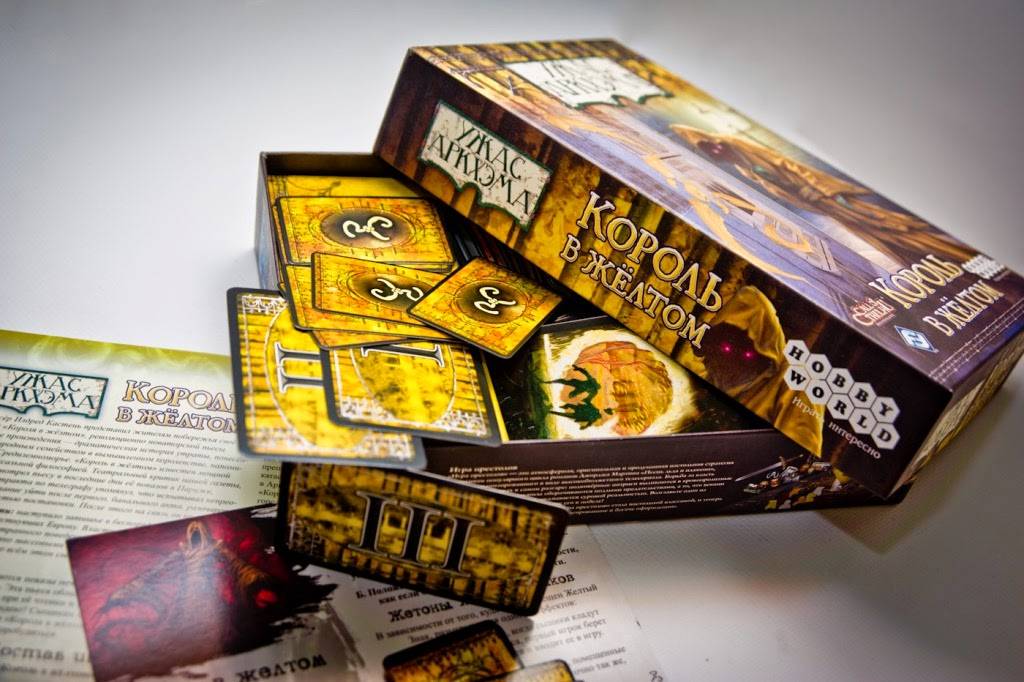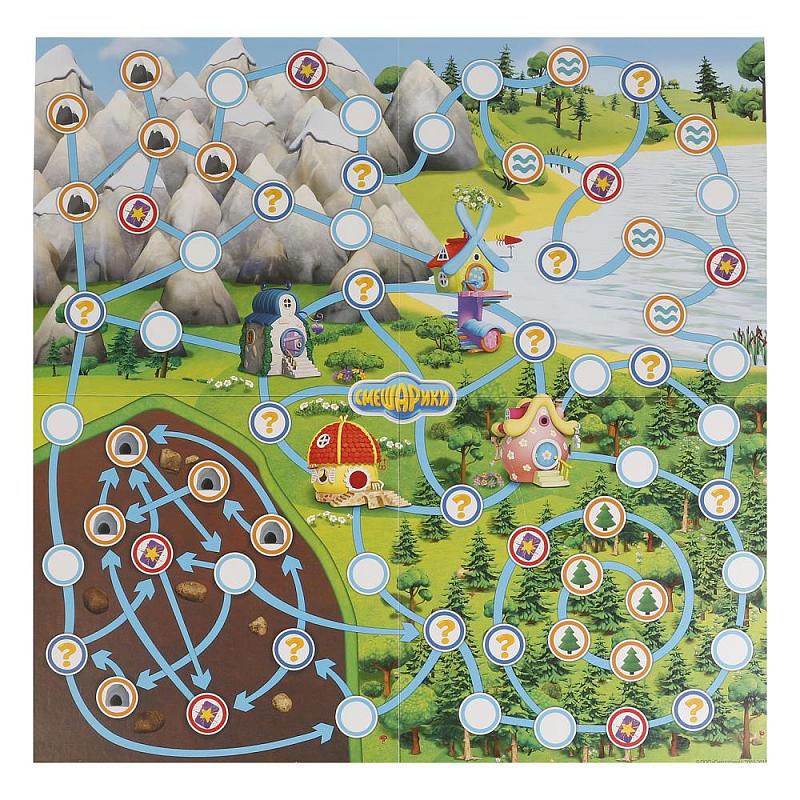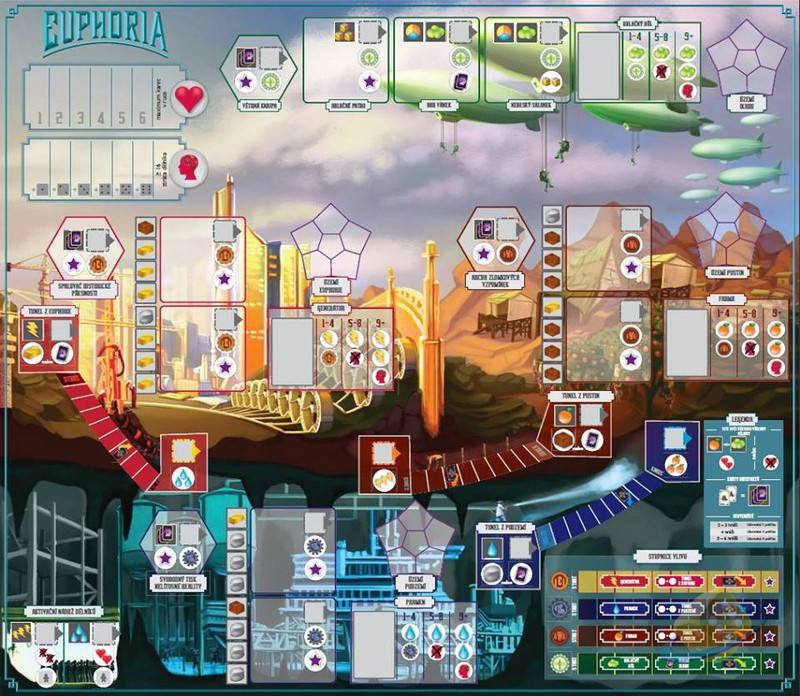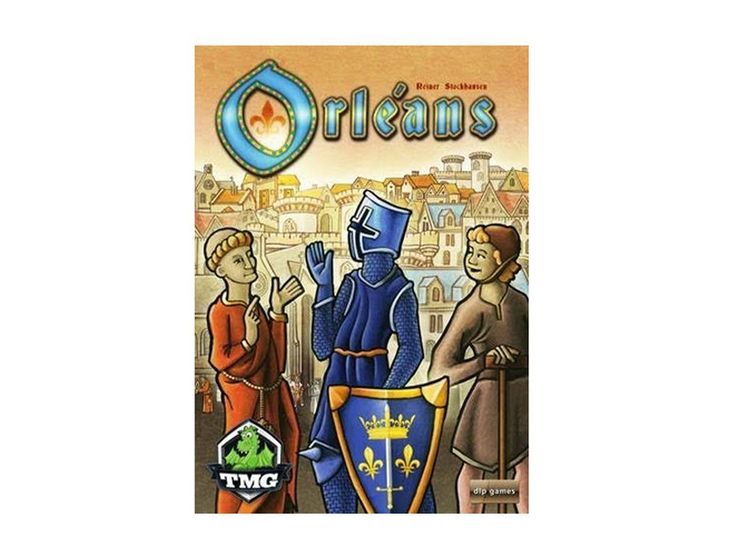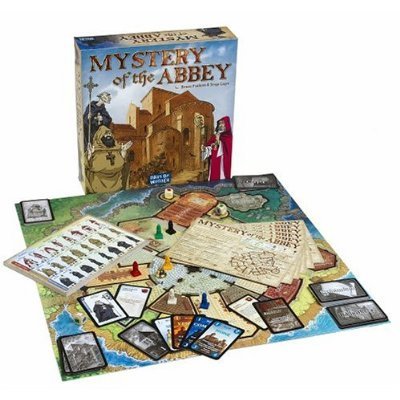References
- Alaska-class cruiser – Wikipedia
Ship Change Log
See here for links to Update notes.
- Available for testing by supertesters in the game starting from update 0.8.8.
- Available via completing the dockyard in update 0.8.11.
- Update 0.9.1:
- Update 0.10.0:
Ships of U.S.A.
| Destroyers | II Sampson • II Smith • III Wickes • IV Clemson • V Nicholas • V Hill • VI Farragut • VI Monaghan • VII Mahan • VII Sims • VII Sims B • VIII Benson • VIII Kidd • IX Fletcher • IX Benham • IX Black • X Gearing • X Somers |
| Cruisers | I Erie • II Chester • II Albany • III St. Louis • III Charleston • IV Phoenix • V Omaha • V Marblehead • V Marblehead Lima • VI Pensacola • VI Dallas • VII Atlanta • VII New Orleans • VII Helena • VII Indianapolis • VII Atlanta B • VII Boise • VII Flint • VIII Baltimore • VIII Cleveland • VIII Wichita • VIII Anchorage • VIII Congress • VIII Rochester • VIII AL Montpelier • IX Buffalo • IX Seattle • IX Alaska • IX Tulsa • IX Alaska B • X Des Moines • X Worcester • X Puerto Rico • X Salem • X Austin |
| Battleships | III South Carolina • IV Wyoming • IV Arkansas Beta • V New York • V Oklahoma • V Texas • VI New Mexico • VI Arizona • VI W. Virginia 1941 • VII Colorado • VII Florida • VII California • VIII North Carolina • VIII Kansas • VIII Alabama • VIII Massachusetts • VIII Alabama VL • VIII Constellation • VIII Massachusetts B • VIII Alabama ST • IX Iowa • IX Minnesota • IX Missouri • IX Kearsarge • IX Georgia • X Montana • X Vermont • X Ohio |
| Aircraft Carriers | IV Langley • VI Ranger • VIII Lexington • VIII Enterprise • VIII Saipan • VIII Saipan B • X Midway • X Franklin D. Roosevelt |
Economy
The economic conditions in Puerto Rico have improved dramatically since the Great Depression due to external investment in capital-intensive industries such as petrochemicals, pharmaceuticals, and technology. Once the beneficiary of special tax treatment from the U.S. government, today local industries must compete with those in more economically depressed parts of the world where wages are not subject to U.S. minimum wage legislation. In recent years, some U.S. and foreign-owned factories have moved to lower wage countries in Latin America and Asia. Puerto Rico is subject to U.S. trade laws and restrictions.
Puerto Ricans had a per capita GDP estimate of $17,700 for 2004, which demonstrates a growth over the $14,412 level measured in the 2002 Current Population Survey by the Puerto Rican Legal Defense and Education Fund. In that survey, Puerto Ricans have a 48.2 percent poverty rate. By comparison, the poorest state of the union, Mississippi, had a median level of $21,587, according to the U.S. Census Bureau’s Current Population Survey, 2002 to 2004 Annual Social and Economic Supplements.
References
- Lewis, Gordon K., and Anthony Maingot. Puerto Rico: freedom and power in the Caribbean. Kingston, Jamaica: Ian Randle, 2004. ISBN 978-9766371722
- Morris, Nancy. Puerto Rico: Culture, Politics, and Identity. Praeger/Greenwood, 1995. ISBN 0275952282
- Picó, Fernando. History of Puerto Rico: A panorama of its people. Princeton, NJ: MMarkus Wiener Publishers, 2006. ISBN 978-1558763708
- Trías Monge, José. Puerto Rico: the trials of the oldest colony in the world. New Haven, CT: Yale University Press, 1997. ISBN 978-0300076189
- BBC Country Profiles BBC.co.uk Retrieved October 23, 2017.
- Constitution of the Commonwealth of Puerto Rico – in English. topuertorico.org Retrieved October 23, 2017.
- The World Factbook – Puerto Rico. CIA.gov Retrieved October 23, 2017.
- Profile of General Demographics Characteristics : 2000. census.gov Retrieved October 23, 2017.
- General Assembly Resolutions 8th Session United Nations un.org Retrieved October 23, 2017.
- Puerto Rican Amazon Parrots international Retrieved October 23, 2017.
- United Nations Environment Programme. Retrieved October 23, 2017.
4. Танцы до утра

Сальса — визитная карточка Пуэрто-Рико. Здесь танцуют все и всегда, так, будто родились на танцполе. По вечерам из кафе и ресторанов доносятся заводные ритмы, тут и там выступают музыканты, а нарядные люди танцуют до самого утра. Если вы не чувствуете в себе уверенности выходить на танцпол, можете для начала взять урок; во многих кафе и клубах проходят специальные обучающие вечера для новичков. Ну а если ваш интерес к сальсе выйдет за рамки ночных танцев, отправляйтесь в тур по Сан-Хуану, который называется Salsa Route. Тур проходит через старые музыкальные магазины, тематические памятники, бары и рестораны, постепенно раскрывая историю развития сальсы, как неотъемлемой части культуры Пуэрто-Рико.
Gallery
Puerto Rico, YEAR
Specifications
- XX tons displacement, standard
- XXm length
- XXm beam
- XXm draft
Bombers
File:PICTURE.JPG CAPTION.
History
Of the six Alaska-class cruisers that were planned, only three were laid down. The first two, Alaska and Guam, were completed by the New York Shipbuilding Corporation. Construction of Hawaii, the third, was suspended on 16 April 1947 when she was 84% complete. The last three, Philippines, Puerto Rico, and Samoa, were delayed since all available materials and slipways were allocated to higher priority ships, such as aircraft carriers, destroyers, and submarines. Construction had still not begun when steel shortages and a realization that these “cruiser-killers” had no more cruisers to hunt—as the fleets of Japanese cruisers had already been defeated by aircraft and submarines—made the ships “white elephants”. As a result, construction of the last three members of the class never began, and they were officially cancelled on 24 June 1943.
Design
====Service====
Ship Change Log
See here for links to Update notes.
- Available for testing by supertesters in the game starting from update 0.8.8.
- Available via completing the dockyard in update 0.8.11.
- Update 0.9.1:
- Update 0.10.0:
Ships of U.S.A.
| Destroyers | II Sampson • II Smith • III Wickes • IV Clemson • V Nicholas • V Hill • VI Farragut • VI Monaghan • VII Mahan • VII Sims • VII Sims B • VIII Benson • VIII Kidd • IX Fletcher • IX Benham • IX Black • X Gearing • X Somers |
| Cruisers | I Erie • II Chester • II Albany • III St. Louis • III Charleston • IV Phoenix • V Omaha • V Marblehead • V Marblehead Lima • VI Pensacola • VI Dallas • VII Atlanta • VII New Orleans • VII Helena • VII Indianapolis • VII Atlanta B • VII Boise • VII Flint • VIII Baltimore • VIII Cleveland • VIII Wichita • VIII Anchorage • VIII Congress • VIII Rochester • VIII AL Montpelier • IX Buffalo • IX Seattle • IX Alaska • IX Tulsa • IX Alaska B • X Des Moines • X Worcester • X Puerto Rico • X Salem • X Austin |
| Battleships | III South Carolina • IV Wyoming • IV Arkansas Beta • V New York • V Oklahoma • V Texas • VI New Mexico • VI Arizona • VI W. Virginia 1941 • VII Colorado • VII Florida • VII California • VIII North Carolina • VIII Kansas • VIII Alabama • VIII Massachusetts • VIII Alabama VL • VIII Constellation • VIII Massachusetts B • VIII Alabama ST • IX Iowa • IX Minnesota • IX Missouri • IX Kearsarge • IX Georgia • X Montana • X Vermont • X Ohio |
| Aircraft Carriers | IV Langley • VI Ranger • VIII Lexington • VIII Enterprise • VIII Saipan • VIII Saipan B • X Midway • X Franklin D. Roosevelt |
Notes
- Nancy Morris, Puerto Rico: Culture, Politics, and Identity (Praeger/Greenwood, 1995, ISBN 0275952282), 62.
- 2010 Census Data 2010 Census Data. Retrieved October 30, 2017.
- Dependencies and Areas of Special Sovereignty. U.S. Department of State.. Retrieved October 30, 2017.
- Carta Autonómica de 1897 de Puerto Rico. Lexjuris.com. Retrieved October 30, 2017.
- Puerto Rico Commonwealth Population Totals Tables: 2010-2016 United States Census Bureau. Retrieved October 23, 2017.
- GDP, PPP (current international $). Retrieved October 30, 2017.
- “GDP per capita, PPP (current international $)”, World Development Indicators database, World Bank. Retrieved October 30, 2017.
- World Bank World Development Indicators. World Bank. Retrieved October 30, 2017.
- The Global Competitiveness Report 2014–2015 (Puerto Rico). Retrieved October 30, 2017.
- Latino/a Education Network Service. de los barrios de las americas Retrieved October 30, 2017.
2. Фестивали по любому поводу

В какое бы время года вы ни решили посетить Пуэрто-Рико, наверняка вы застанете какой-нибудь яркий фестиваль. Лёгкость на подъём и весёлый нрав пуэрториканцев делают праздником даже скромное событие. Парады и представления проходят здесь по любому поводу, будь то фестиваль орхидей или ананасов, пива или сахарного тростника и… до конца списка еще очень далеко! С большим размахом отмечается уличный фестиваль Сан Себастьяна, во время которого проводится красочный парад, устраиваются танцы, разбиваются палатки с традиционными угощениями и предметами творчества местных мастеров. Ежегодно, начиная с 1970-х, в середине января в старую часть города Сан-Хуан стекаются тысячи туристов, чтобы стать частью самого шумного и весёлого фестиваля в Пуэрто-Рико.
Government and Politics
City meets the shore in San Juan
The legal system is based on a mix of the Civil Law and the Common Law systems. Puerto Rico’s formal Chief of State is the President of the United States; however, most of the executive functions are carried out by the elected Governor.
The current constitution of Puerto Rico was approved through referendum in 1952 and ratified by the U.S. Congress, which maintains ultimate sovereignty over Puerto Rico. Under the 1952 constitution, Puerto Rico is a territorial commonwealth of the U.S. and is permitted a high degree of autonomy. Still, Puerto Rico does not have voting representation in the U.S. Congress; neither does it have any delegates to the U.S. Electoral College, and therefore Puerto Rican citizens have no representation in the U.S. presidential elections. A non-voting Resident Commissioner is elected by the residents of Puerto Rico to the U.S. Congress. Residents of the island do not pay federal income tax on income from island sources; however, island residents do pay social security taxes and other federal taxes. The island was also exempt from the national 55 mph speed limit that was mandated on the rest of the U.S. from 1974 to 1995.
Puerto Rico’s three major political parties are most distinguished by their position on the political status of Puerto Rico. The Popular Democratic Party (Spanish: Partido Popular Democrático de Puerto Rico, PPD) seeks to maintain or improve the current Commonwealth status, the New Progressive Party (Spanish: Partido Nuevo Progresista de Puerto Rico, PNP) seeks to fully incorporate Puerto Rico as a U.S. state, and the Puerto Rican Independence Party (Spanish: Partido Independentista Puertorriqueño, PIP) seeks national independence.
U.S. Commonwealth
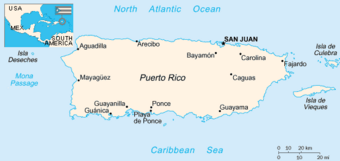
Map of Puerto Rico
Although Puerto Rico is, politically speaking, a Commonwealth of the United States, Puerto Ricans and people from other nations refer to Puerto Rico as a país, the Spanish word for country. This is a very common and accepted international status given to all dependent territories, also called dependent “states” by the UN. This is highlighted by the fact, for example, that Puerto Rico is an independent country in the sports world, even having their own Olympic teams. In the jargon of international law, an inhabited territory that is not a first-order administrative division, but rather forms an external, non-sovereign territory governed by a sovereign one, is both a “state” and a “country.” But none of these cases—- neither U.S. “states” nor dependent “states/countries”—are considered sovereign international entities.
Municipalities
As a commonwealth associated with the United States, Puerto Rico does not have any first-order administrative divisions as defined by the U.S. government, but there are 78 municipalities at the second level. (Mona Island is not a municipality, but part of the municipality of Mayagüez). Each municipality has a mayor and a municipal legislature elected for a four-year term.
The first municipality (then termed a town) of Puerto Rico, San Juan, was founded in 1521. In the sixteenth century two more municipalities were established, Coamo (1570) and San Germán (1570). Three more municipalities were established in the seventeenth century. These were Arecibo (1614), Aguada (1692), and Ponce (1692). The eighteenth and nineteenth century saw an increase in settlement in Puerto Rico. There were 30 municipalities established in the eighteenth century and 34 more in the nineteenth century. Only six municipalities were founded in the twentieth century. The last municipality was Florida, founded in 1971.
The municipalities are further subdivided into barrios, and those into sectors.
Geography
Puerto Rico (pronounced pwer-tuh ree-koh), the smallest of the Greater Antilles, consists of a main island of Puerto Rico and various smaller islands, including Vieques, Culebra, Mona, Desecheo, and Caja de Muertos. Of the latter five, only Culebra and Vieques are inhabited year-round. Mona is uninhabited through large parts of the year except for employees of the Puerto Rico Department of Natural Resources. There are also many other even smaller islands including Monito and “La Isleta de San Juan” known as Old San Juan.
The mainland measures some 100 miles by 35 miles (170 km by 60 km). It is mostly mountainous with large coastal areas in the north and south regions of the island. The main mountainous range is called “La Cordillera Central” (The Central Range). The highest elevation point of Puerto Rico, Cerro de Punta (4,390 feet; 1,338 m), is located in this range. Another important peak is El Yunque, located in the Sierra de Luquillo at the El Yunque National Forest, with a maximum elevation of 3,494 feet (1,065 m). The capital, San Juan, is located on the main island’s north coast.
Puerto Rico has 17 lakes, all of which are man-made reservoirs. None of its more than 50 rivers are large enough for navigation, but those in the north are utilized for municipal water supplies, irrigation, and hydroelectricity. The southern coastal rivers are essential for agriculture.
Climate
Located in the Caribbean, Puerto Rico has a tropical climate with little seasonal variation and enjoys an average temperature of 82.4 °F (28 °C) throughout the year. The temperature in the south is usually a few degrees higher than the north and temperatures in the central interior mountains are always cooler than the rest of the island, ranging from 73°F and 78°F (22°C and 25°C). Hurricanes develop between June 1 and November 30, occasionally traversing the island.
Flora and fauna
Plant life is abundant and varied. As of 1998, 239 plants had been recognized as endemic species. The south, drier, side of the island is covered in thorn and scrub vegetation while tropical rainforests dominate the north.
Sixteen birds and 39 amphibians and reptiles have been discovered that are endemic to the archipelago. The majority of these are found on the main island. The most recognizable endemic species and a symbol of Puerto Rican pride is the Coquí, a small frog easily recognized by the sound from which it gets its name. The El Yunque National Forest, previously known as the Caribbean National Forest, a tropical rainforest, is home to the majority (13 of 16) of species of coquí. It is also home to more than 240 plants, 26 of which are endemic, and 50 bird species, including one of the top 10 endangered birds in the world, the Puerto Rican Amazon.
Player Opinion
Pros:
- Huge health pool for a cruiser
- Twelve 305mm rifles give great alpha damage potential and have better than average range for her tier. Her AP shells are capable of citadeling broadside battleships doing massive damage.
- Good turret traverse.
- Decent fire-starting potential with HE.
- Many consumable options, including radar.
- Decent armor, for a cruiser.
- Like most USN vessels, she has strong AA.
Cons:
- Due to her size, she is not agile.
- Battleship dispersion and slow reload, coupled with average dispersion.
- Lousy base concealment.
- Vulnerable to fire.
Vulnerable to broadside damage and to focused battleship fire in any orientation.
LittleWhiteMouse’s Premium Ship Review: Puerto Rico from the NA forums
7. Вьекес и Кулебра

Два этих странных слова — названия небольших островов-спутников, расположенных к востоку от Пуэрто-Рико, до них можно доплыть на пароме из Фахардо или долететь на маленьком самолёте из Сан-Хуана. На острове Кулебра есть пляж Фламенко, где из песка виднеются старые ржавые танки, оставленные здесь сорок лет назад — сюрреалистическая натура для запоминающихся фотографий. А пляж Зони облюбовали морские черепахи, выползающие сюда откладывать яйца. На острове Вьекес нужно остаться на ночь и провести её в Москито-бэй — заливе, полном биолюминисцентного планктона, который светится по ночам ярким неоновым светом. Днем же стоит отправиться на пляж Сан Бэй, чтобы понаблюдать за дикими лошадьми. На обоих островах есть прекрасные пляжи, отели и рестораны, поэтому можно остаться там на несколько дней и устроить себе отпуск во время отпуска.
Вы ведь помните, что путешествия выгоднее всего покупать «пакетом».
Вам может быть интересно:10 самых живописных островов для летнего отдыхаПочему стоит поехать на Кубу именно сейчас
Credits
New World Encyclopedia writers and editors rewrote and completed the Wikipedia article
in accordance with New World Encyclopedia standards. This article abides by terms of the Creative Commons CC-by-sa 3.0 License (CC-by-sa), which may be used and disseminated with proper attribution. Credit is due under the terms of this license that can reference both the New World Encyclopedia contributors and the selfless volunteer contributors of the Wikimedia Foundation. To cite this article click here for a list of acceptable citing formats.The history of earlier contributions by wikipedians is accessible to researchers here:
Puerto Rico history
The history of this article since it was imported to New World Encyclopedia:
History of “Puerto Rico”
Note: Some restrictions may apply to use of individual images which are separately licensed.
5. Ром и выпечка

Пуэрториканский ром — главный ингредиент во многих местных коктейлях, включая и знаменитую Пинья-Коладу, которую придумали именно здесь. Вместо известного всем Bacardi обязательно попробуйте местные сорта рома, которые вы вряд ли найдете где-то ещё, например, DonQ, Palo Viejo, Ron Llave или Ron del Barrilito.
После ночных приключений самое приятное утреннее занятие — это неспешный бранч в Panadería. Так в Пуэрто-Рико называются уличные пекарни, работающие в первой половине дня. В них подают отменный кофе, свежую выпечку, сытные завтраки и обеды. По всему острову, в каждом городе есть десятки таких пекарен.
6. Природа

Стоит немного отъехать от пляжей вглубь острова, и перед вами откроются дикие пейзажи, поражающие своей красотой. Главные природные достопримечательности Пуэрто-Рико — парк Camuy River Cave, представляющий собой протяжённую пещеру с подземной рекой, природный заповедник Parguera со сложной системой коралловых рифов, а также тропический лес национального заповедника El Yunque. Остров Пуэрто-Рико относительно небольшой, на машине его можно объехать за один день, поэтому тут пользуются популярностью обзорные экскурсии, на которых за одну поездку можно посмотреть и на пещеры, и на мангровые заросли, и на коралловые рифы, на ламантинов, пуэрториканских лягушек и редких птиц.
3. Традиционные ремесла

В колониальные времена Пуэрто-Рико был богатым портом с точки зрения экспорта — на острове активно выращивались кофе, сахар и табак. В наши дни фермы и плантации перешли к частным владельцам и по-прежнему производят товары отменного качества по традиционным технологиям. Экскурсии на тростниковые и кофейные плантации будут особенно интересны семьям, поскольку тут дети смогут познакомиться с настоящей сельской жизнью и своими глазами увидеть, что сахар и кофе растут не в супермаркете. А в городе Вега Баха есть ферма, где разводят и тренируют лошадей, там можно пообщаться с этими умными и добрыми животными.
1. Живая история

Новые поколения жителей острова с уважением относятся к наследию своих предков, поэтому в Пуэрто-Рико современные отели мирно и органично соседствуют с вековыми постройками. Сан-Хуан, столица Пуэрто-Рико, застраивался слоями, поэтому в черте города можно увидеть любую из исторических эпох. Так, известный испанский ресторан La Mallorquina открылся 150 лет назад. Лучшую на острове паэлью подают, как и полтора века назад, в стенах, расписанных картинами с нарядными дамами XIX века. Сам город окружён стеной форта Фуэрте-Сан-Фелипе-дель-Моро, возраст которой приближается к 500 годам. Первая в западном полушарии христианская церковь также была построена именно здесь. Кафедральный собор San Juan Bautista, украшающий центр старого города, был возведён из дерева в 1521 году, а позже отреставрирован уже камнем. Жемчужиной путешествия в прошлое является Индейский Церемониальный Центр Тибс в городе Понсе — восстановленная деревня индейцев аравака, живших на островах Карибского бассейна в 25 году до н.э. Этому центру совсем скоро исполнится 2000 лет!


